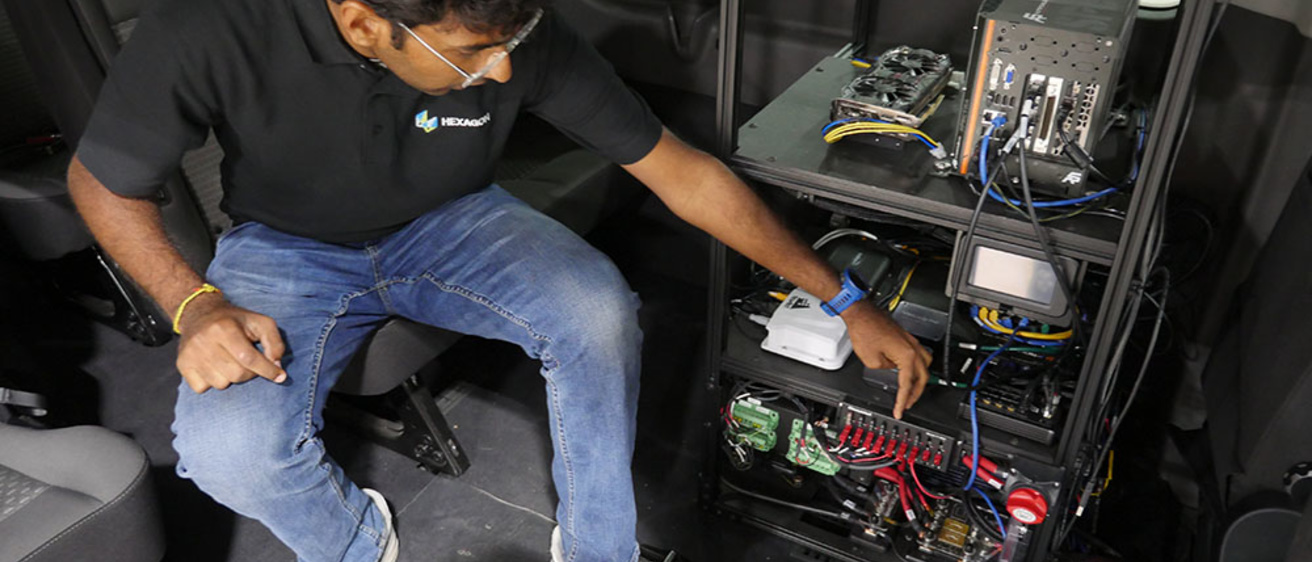In this newsletter:

Phase 3 underway
We recently started Phase 3 (of 6) of our project. During this phase, we are driving under automation through most of the in-town portions of our route, in addition to the highways and on/off ramps. Our vehicle can now detect the colors of traffic lights and respond accordingly. Here is the plan for the remaining phases:
| Phase | Description | Date | Status |
| 1 | Controlled Access Roadways/Interstates | 11/2021 | Complete |
| 2 | Highways and Ramps | 03/2022 | Complete |
| 3 | Urban/In-Town Areas | 06/2022 | In progress |
| 4 | Unmarked and Gravel Roads | 10/2022 | Planning |
| 5 | V2X* | 01/2023 | Planning |
| 6 | Parking Areas / Full Route | 05/2023 | Planning |
*V2X is short for "vehicle-to-everything," when a vehicle is connected to, or can receive information from, other road users (such as other vehicles or pedestrians) or from infrastructure, such as traffic lights. In our case, we'll be instrumenting select school buses to transmit their position, heading, and warning-light status (flashing amber or red) when in the vicinity of our vehicle. This will allow us to tell where a school bus is located and if it is stopped in the road, even if it is not in our line-of-sight (for example if we're approaching a blind hill or corner).
Tech partner spotlight: Hexagon | AutonomouStuff
Hexagon | AutonomouStuff turned our Ford Transit shuttle bus into a custom automated vehicle, outfitting the vehicle with a suite of hardware and software—which when combined—enables autonomous operation in live traffic.

We continue to work with them through each of the project’s six phases. For each phase, they enhance the automation to make it more sophisticated and add functionality. In later phases, the team will be adding functionality to allow the vehicle to navigate different types of parking areas, drive unmarked gravel roads, and more, all under automation.
"It's essential to have a strong working relationship with your technology partner, and we have that with AutonomouStuff," says Omar Ahmad, Iowa team project manager. "They have the expertise we need, they're always responsive when an issue arises, and they have been fantastic partners throughout this project."
Sri Mushty (pictured) is one of the autonomous software specialists from Hexagon | AutonomouStuff who provides support for the ADS for Rural America project, both on-site in Iowa and from AutonomouStuff’s facility in Morton, Illinois. In the photo, he tests some software updates on a demonstration Ford Transit platform at the AutonomouStuff facility, which has similar autonomous system hardware to the University of Iowa's Transit vehicle. Mushty can access most of what he needs from a rack behind the driver’s seat of the demonstration platform in Illinois, before the software updates are installed on computers in the vehicle in Iowa.

About: Hexagon is a global leader in digital reality solutions, combining sensor, software, and autonomous technologies. They are putting data to work to boost efficiency, productivity, quality, and safety across industrial, manufacturing, infrastructure, public sector, and mobility applications. Their technologies are shaping production and people-related ecosystems to become increasingly connected and autonomous – ensuring a scalable, sustainable future.
Co-pilot display
During every drive, the co-pilot (who sits in the front passenger seat) monitors the operation of both the vehicle and the automation technology, in addition to being a second set of eyes and ears for the safety driver. The co-pilot monitors the automation using a tablet display in front of them. Here's an example of what they see:

The larger embedded video shows the view out the rear of the vehicle, while the smaller inset video shows a forward view. Why, you ask? Because the co-pilot can already easily see what's directly in front of the vehicle. The tablet helps them see what is behind the vehicle. The lower-left corner of their tablet shows the computer vision, or what the automation "sees" and the path that the vehicle is programmed to follow. The upper-right shows the status of the different automation features.

Watch a video of this in action.
Learn more
Automated vehicles bring the potential of greater safety and mobility for all.
Are you local? See how to participate.
Stay up-to-date:
- Visit our website at adsforruralamerica.uiowa.edu
- Follow the National Advanced Driving Simulator on Facebook, Twitter, and on LinkedIn.
